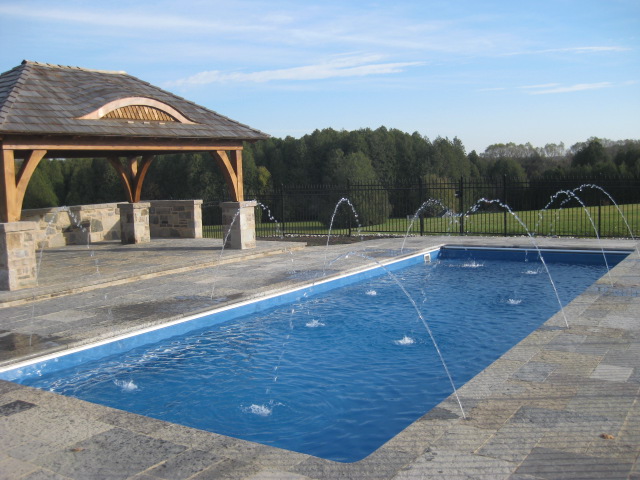A plunge pool is a small, shallow pool typically designed for the purpose of wading, cooling off, or hydrotherapy. Unlike traditional swimming pools, plunge pools are smaller in size, ranging from small rounds to 10 x 20 foot rectangles and 3 to 5 feet in depth. They are often constructed with materials such as concrete, fiberglass, or even natural materials like stone.
Plunge pools have gained popularity for several reasons:
- Space-saving: Plunge pools are ideal for smaller outdoor spaces or urban areas where there may not be enough room for a standard-sized swimming pool. They can be installed in backyards, rooftops, or even on balconies, making them a versatile option for those with limited space.
- Relaxation and hydrotherapy: Plunge pools offer a refreshing and rejuvenating experience. The cool water provides a quick and invigorating dip, helping to lower body temperature and providing relief during hot weather. Additionally, the hydrostatic pressure of the water can provide therapeutic benefits, such as reducing muscle inflammation and promoting better circulation.
- Aesthetic appeal: Plunge pools can enhance the visual appeal of outdoor spaces. They can be designed in various styles, from contemporary to naturalistic, and can incorporate features like waterfalls, lighting, or decorative tiles. Many homeowners see plunge pools as a way to add a touch of luxury and elegance to their outdoor living areas.
- Easy maintenance: Due to their smaller size, plunge pools require less maintenance compared to larger swimming pools. They require less water, fewer chemicals, and a smaller filtration system, resulting in reduced maintenance costs and time.
- Versatility: Plunge pools can serve multiple purposes. While they are great for a quick dip, they can also be used for aquatic exercises, relaxation, or even as a spa-like feature when combined with hydrotherapy jets.
It’s important to note that while plunge pools have become increasingly popular, the level of popularity may vary depending on geographical location, climate, and individual preferences.




